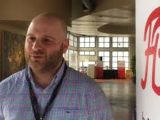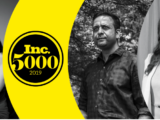
As a woman-owned business that partners with quickly-scaling tech companies to help them hire strong teams, Creative Alignments is well aware of the fact that barely 25% of workers in the technology sector are women. Yes, this is up from 8% in 1970, but there is a lot of progress yet to make, especially when it comes to women holding leadership positions and highly technical roles.
In honor of Women’s History Month, we asked two of Creative Alignments’ senior technical recruiters for their perspectives on these trends after working in the tech industry throughout their careers. Read on to hear their insights for both employers and candidates alike to increase diversity in a historically homogeneous industry.
Christy Cope is cheerful, outgoing, and endlessly curious about people and tech. With a degree in Psychology and three decades of HR and talent acquisition experience working as both an internal and external recruiter for companies such as Micron, HP, and Google, she brings a myriad of experiences and long-term perspectives to the conversation.
Triza Codillo is genuine, resourceful, and creative in her recruiting work. After a decade in recruiting, primarily in an agency setting, she still loves the daily challenge and has lots of opportunities to put to work her degree in Corporate Communication. Triza was born in the Philippines, moving to the US when she was eight.
How has hiring in the tech industry changed over the course of your career, both in general and specifically for women?
Christy: “I’ve been doing this for 30 years, so I have seen a huge amount of change, especially in the technology used for recruiting itself. I used to review paper resumes on my bus ride, and now we have AI. We’ve gone from being gatherers to becoming hunters, and we have systems that hunt for us.
I am seeing a higher percentage of female and BIPOC candidates, which is in part because of being intentional about sourcing more diverse candidates.”
Triza: “The process is different. We are more employee and candidate-centric because companies need to ‘sell’ the opportunities they have. ‘Employment brand’ was less important 11 years ago.
In my past work recruiting for large, legacy corporations in tech and telecom, engineering roles were often for men and project manager and business analyst roles more often for women. Now, I am definitely talking to more female engineers.
I can’t wait to be asked this same question in 10 years!”
Christy: “I want to be part of this change!”
What near-term trends, undercurrents, and developments do you foresee in recruiting and hiring?
Christy: “First, I’d say the importance of diversity, equity, and inclusion [DEI] in hiring. Demographics are changing in both the general population, consumers, and the labor market, so employers need to be building teams that look like our communities. One way this shows up is by focusing less on candidates with degrees from top universities, which are not always financially available to people, and instead focusing more on specific traits and skills needed for the job.
Second, the influence of AI in search capabilities is also changing quickly, and we are constantly learning more about how to leverage it.”
Triza: “I believe that employers really need to think about how they are communicating to candidates and creatively sell their company culture and work environments.”
Christy: “The other side of that is candidates are learning how hiring managers and recruiters are using tech to search. They are paying closer attention to the keywords that need to show up in their LinkedIn profiles and digital footprint. Make sure your socials are clean too!”
Triza: “In the past, you either used technology like Dice or Monster to find a job, or you leveraged your professional network. Now, tech for job seekers and social connections are much more intertwined with the advent of Slack communities, Meetup platforms, code repos, LinkedIn, etc.”
What advice would you give to companies that are hiring currently?
Christy: “Train. Your. Interviewers. Plan ahead to create a consistent candidate experience. Define areas of focus for each person on the interview team. Have a round-up after every interview, while it is still fresh in people’s minds. Pay close attention to the language in the job description to make sure it is inclusive and welcoming… and free of typos!”
Triza: “Yes! And, job descriptions should not just be checklists. Share information about what it will be like to work at this company, in this role. Interviewing is also top of mind for me as well. I want my hiring managers to be organized so that candidates are taking away something from every conversation they have.
Christy: “Yea, your job posting is the first point of contact your company is having with a prospective employee, so it has to be great. Why is working at your company better than working at a competitive company?”
For companies seeking to diversify their teams in a male-dominated industry like tech, how do you advise them to approach hiring more women?
Triza: “Pay close attention to how people on your team communicate with one another currently. Is your company culture ready to be diverse? Be intentional about creating an authentically inclusive and welcoming environment. Do your research.”
Christy: “I had the same thought: make sure you can support diversity and make sure you have a diverse interviewing panel. And talk to candidates about your intentionality.”
Triza: “Be transparent about your current culture and what you’re trying to build intentionally. Talk to women outside of your workplace and ask them their advice and their experience in interviewing.”
What advice would you give to women on landing a job in tech right now, especially those new to the workforce?
Christy: “Women often downplay their abilities, while men are often more comfortable bragging. My advice to women is to celebrate your successes and know your voice is valuable. Get to know if the company culture truly values diversity, too.”
Triza: “I agree. Take up space! And build a strong support network of other women. Looking at the company’s blog, Glassdoor reviews and socials can tell you a lot about their values. Are they aligned with yours? Ask follow-up questions to find out more in your interview, or leverage your network to get a feel for what it’s like to work there.”
How can tech companies continue to make their work environments more inclusive for female employees, especially in technical roles?
Christy: “Lead by example and walk the talk. Be intentional. Communicate. Educate and train.”
Triza: “But no trainings for training’s sake. Make it meaningful and let people connect, interact and practice with the material.”
With regard to your own career working in an industry populated mostly by men, what might you have told your younger self?
Christy: “Learn to say ‘No’. If you just keep saying ‘Yes,’ you’ll soon become overworked, angry, and pick a bad emotion. Set boundaries and take more chances. And, it’s okay to be emotional”
Triza: “Know what you have to offer and be proud of that. I have read a lot and heard stories of women who are scared to say no, or even take maternity leave, for fear that they’ll lose out on opportunities. I think it’s important to be polite, kind, and empathetic, but you don’t have to bend over backward to make someone else comfortable.”
Christy: “Ask questions and don’t be fearful of what you don’t know. My goal with every single job, interview, and candidate call is to learn something new. We need to continually ask questions.”
Creative Alignments is grateful for Triza and Christy’s experience and perspectives. As a company, we work hard to be strong recruiting consultants to our clients and provide our clients with well-curated, diverse pools of candidates for every search we work on. While we don’t claim to be experts in diversity, equity and inclusion (DEI), we are committed to our DEI work, both internally and with our clients, and are continually learning.




